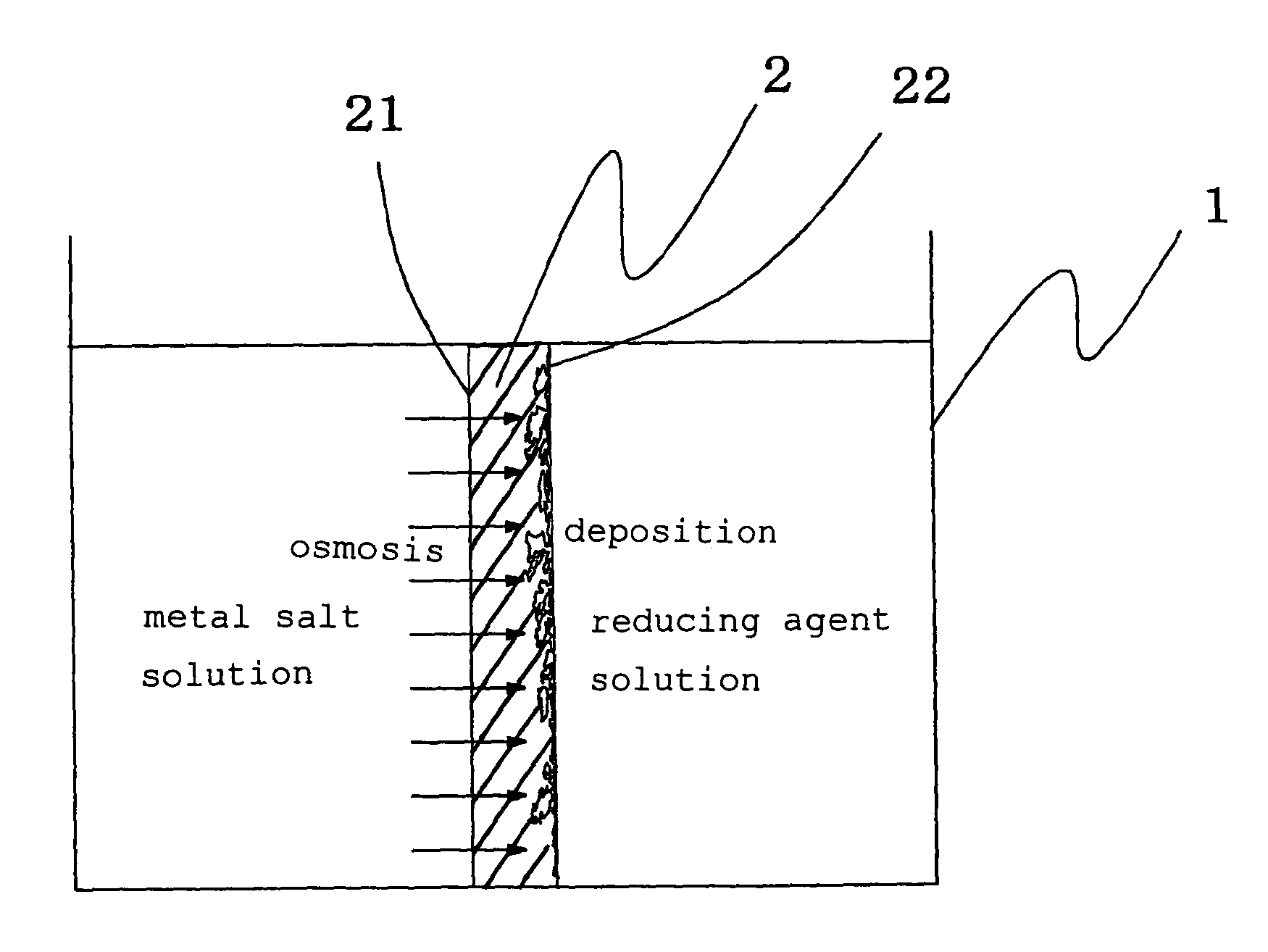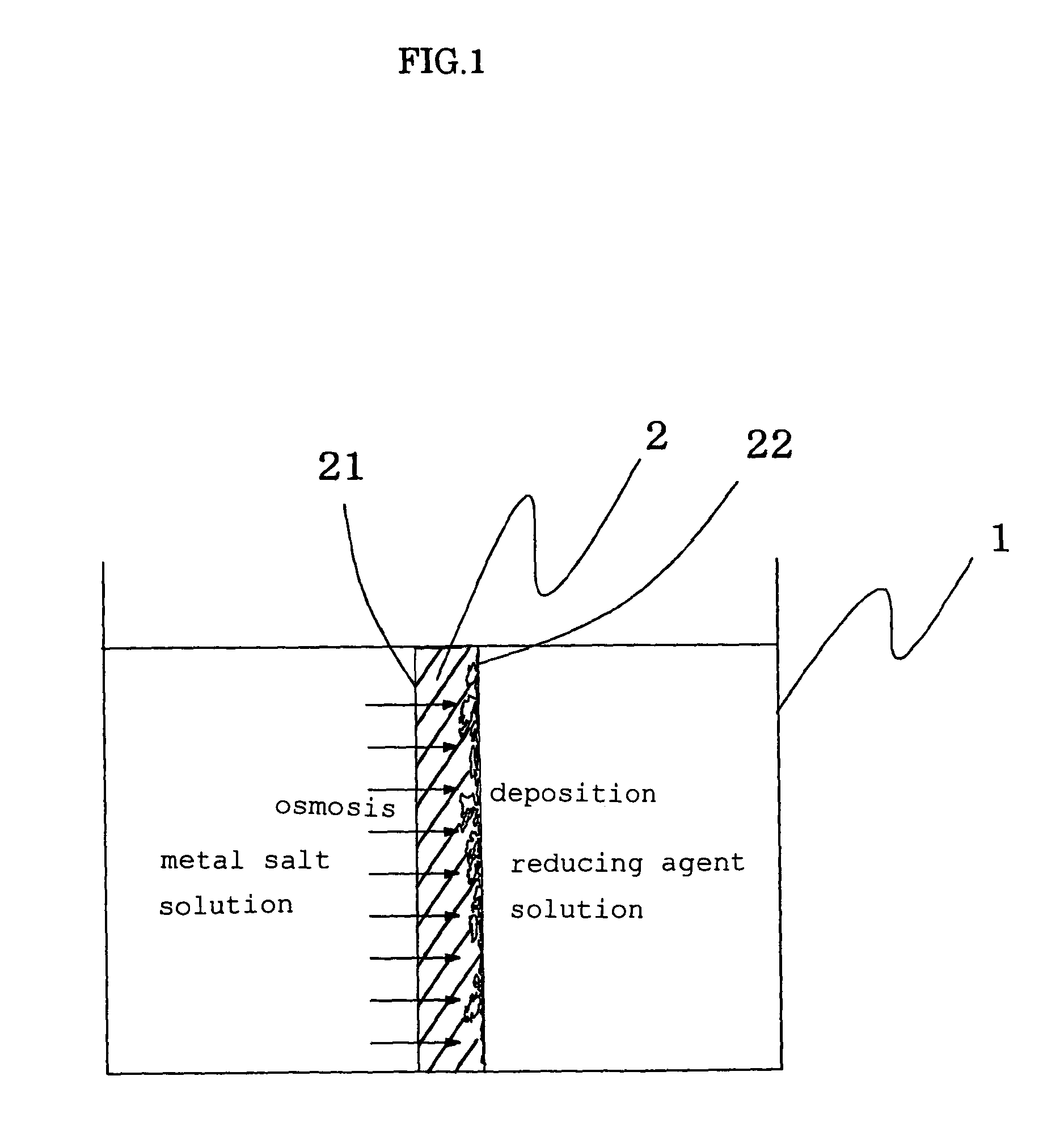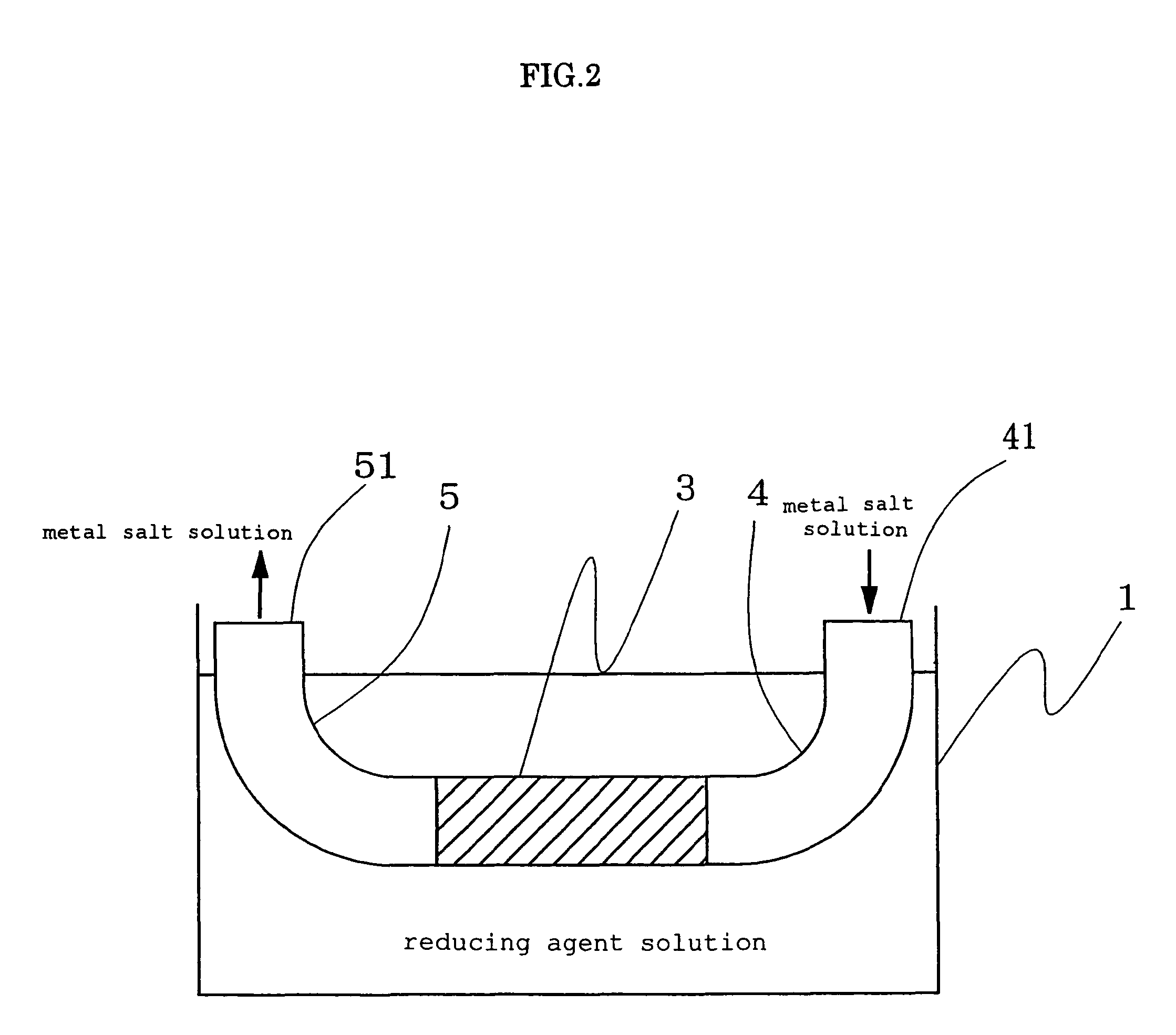Electrode forming method
a technology of electrodes and forming methods, applied in the direction of liquid/solution decomposition chemical coating, paper/cardboard containers, transportation and packaging, etc., can solve the problems of difficult to obtain a large electrode surface area and several days of production, and achieve the reduction of the number of steps required for forming an electrode layer, the effect of reducing the number of steps
- Summary
- Abstract
- Description
- Claims
- Application Information
AI Technical Summary
Benefits of technology
Problems solved by technology
Method used
Image
Examples
example 1
[0049]A film-like fluororesin-based ion exchange resin form with a film thickness of 200 μm (trade name: Flemion, made from perfluorocarboxylic acid resin and manufactured by Asahi Glass Co., Ltd. with an ion exchange capacity of 1.44 meq / g) was used as a solid electrolyte form, both surfaces of the ion exchange resin molded product film were roughened using alumina particles having a grain size of #800, and thereafter the ion exchange resin molded product was placed in a known plastic vessel in the shape of a box open at the top thereof so that the ion exchange resin molded product working as a partition in the plastic vessel, wherein a space on one side of the partition was filled with a dichlorophenanthroline gold aqueous solution (with a concentration of 1.0 wt %), while a space on the other side was filled with a sodium sulfite aqueous solution (with a concentration of 5 wt %). The dichlorophenanthroline gold aqueous solution was kept at a temperature higher than the sodium sul...
example 2
[0050]An actuator element of Example 2 was obtained in a similar way to that in Example 1 with the exception that in Example 2, a fluororesin-based ion exchange resin molded product with an ion exchange capacity of 1.80 meq / g (trade name: Flemion, made from perfluorocarboxylic acid resin and manufactured by Asahi Glass Co., Ltd.) was used instead of the fluororesin-based ion exchange resin molded product with an ion exchange capacity of 1.44 meq / g (trade name: Flemion, made from perfluorocarboxylic acid resin and manufactured by Asahi Glass Co., Ltd.).
example 3
[0051]A fluororesin-based ion exchange resin (trade name: Flemion, made from perfluorocarboxylic acid resin and manufactured by Asahi Glass Co., Ltd. with an ion exchange capacity of 1.44 meq / g) was molded into a tube by means of an extrusion molding method to thereby obtain a perfluorocarboxylic acid tube (with an ion exchange capacity of 1.44 meq / g, an inner diameter of 0.57 mm and an outer diameter of 0.65 mm), plastic tubes (made from silicone) with the same inner diameter and the same outer diameter as the perfluorocarboxylic acid tube were attached to both ends of the perfluorocarboxylic acid tube and the perfluorocarboxylic acid tube was immersed in a sodium sulfite aqueous solution (having a concentration of 10 wt %) with which a known glass vessel in the shape of a box open at the top thereof was filled. The dichlorophenanthroline gold aqueous solution (having a concentration of 1.0 wt %) was poured into one tube made from silicone attached to the perfluorocarboxylic acid t...
PUM
| Property | Measurement | Unit |
|---|---|---|
| thickness | aaaaa | aaaaa |
| thickness | aaaaa | aaaaa |
| temperatures | aaaaa | aaaaa |
Abstract
Description
Claims
Application Information
 Login to View More
Login to View More - R&D
- Intellectual Property
- Life Sciences
- Materials
- Tech Scout
- Unparalleled Data Quality
- Higher Quality Content
- 60% Fewer Hallucinations
Browse by: Latest US Patents, China's latest patents, Technical Efficacy Thesaurus, Application Domain, Technology Topic, Popular Technical Reports.
© 2025 PatSnap. All rights reserved.Legal|Privacy policy|Modern Slavery Act Transparency Statement|Sitemap|About US| Contact US: help@patsnap.com



